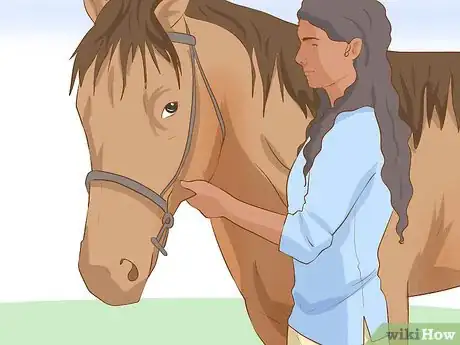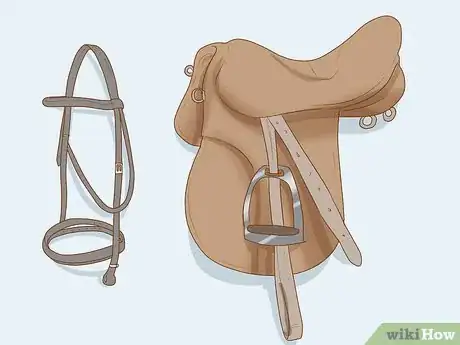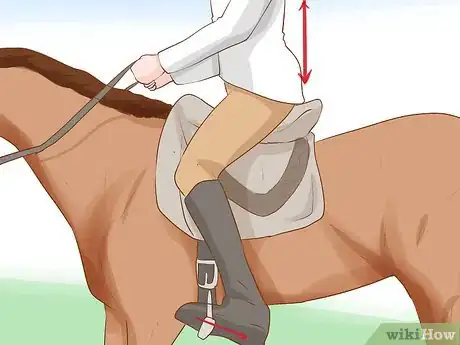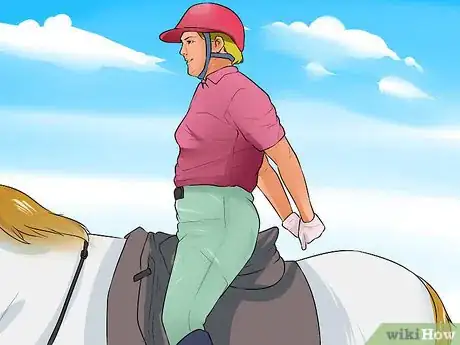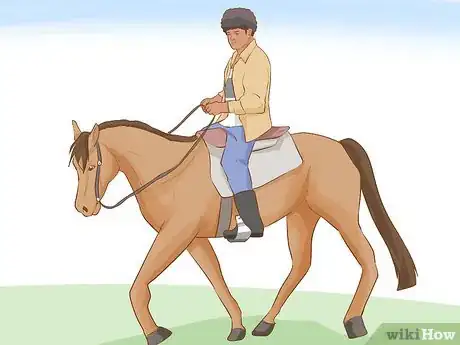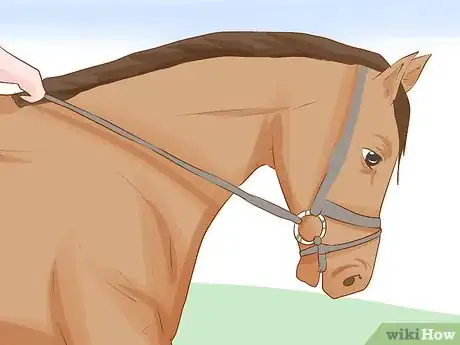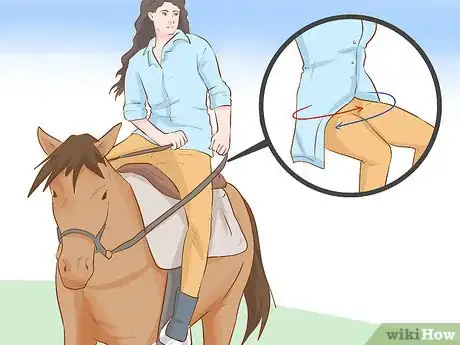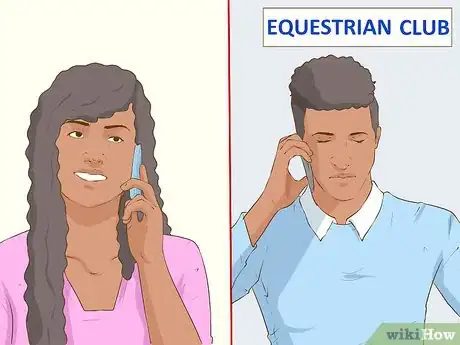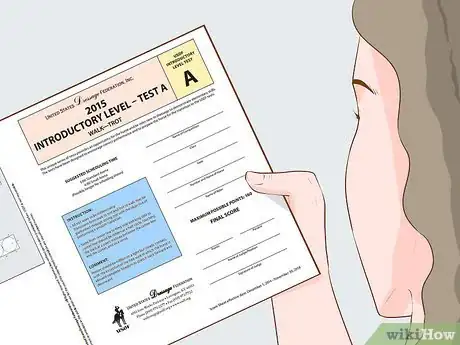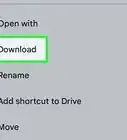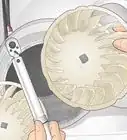This article was co-authored by Ryan Corrigan, LVT, VTS-EVN. Ryan Corrigan is a Licensed Veterinary Technician in California. She received her Bachelor of Science in Veterinary Technology from Purdue University in 2010. She is also a Member of the Academy of Equine Veterinary Nursing Technicians since 2011.
There are 11 references cited in this article, which can be found at the bottom of the page.
This article has been viewed 115,705 times.
The sport of dressage has existed for as long as people have been riding horses. Very simply, it is the art of training your horse to its full potential. Today, it has evolved into one of the most highly regimented disciplines in the horse world. Dressage is a series of movements which are performed by the rider giving aids to their horse to perform advanced movements, giving the impression the horse is “dancing” with their rider. In USDF (United States Dressage Federation) showing, dressage has been divided up into five levels, with “Basic dressage” considered the introductory or training level dressage.
Steps
Readying Your Horse
-
1Get to know your horse. First, make sure you familiarize yourself with your horse and that your horse knows you. Before you get all into competing or just doing dressage for fun, make sure your horse knows who you are and knows that it can trust you. You also have to make sure you have faith in your horse. If you don't think you or your horse can do it, you won't be able to.[1]
- Learning dressage depends entirely on being able to create a strong bond with your horse. Your horse must trust you to give it appropriate commands and you must trust it to do what you ask it to.
- To bond with your horse, try to spend a lot of time with each other in a way that reinforces the fact that you are the leader. Take your horse on walks and lead it by the bridle.[2]
- Groom and bathe your horse and talk to it in soothing tones. Spending time with your horse while it grazes, hand-feeding it, and riding it are other ways to bond.
-
2Gather the necessary materials. To practice dressage, you’ll need to make sure you have all the supplies you and your horse will need. This includes a dressage saddle, a saddle liner, stirrups, a bridle, and reins.[3]
- If you can, find a mentor for help. Someone who already competes in dressage can make sure you have all the needed gear for you as well as your horse.
- Make sure you also have a good pair of boots to wear while you practice your dressage. Inappropriate footgear can lead to injury.
- There are other supplies that may be required for competitions – like a tailcoat for you or a fly hood for your horse.
Advertisement -
3Work on your position in the saddle. Keep your heels down at all times. This keeps your weight back and body positioned solidly in the saddle. Adjust your stirrups so that your knee is at about an eighty-degree angle. The balls of your feet should rest on the stirrup irons. Sit tall in the saddle without bracing your back. This will help improve your balance in the saddle.[4]
- Keep the ball of your foot in the iron at all times. If you only put your toes in, your feet will slip out of the irons if your horse spooks and you will have no chance of staying on.
-
4Get in shape. Dressage is a sport that requires a lot of fitness from both the horse and you. You'll need to work gradually to build up the horse to the necessary level of exercise. You also don’t want to push the animal too much, as it could get hurt from overwork and injure a tendon or ligament.[5]
- To get in shape, your horse will need to be trained 3 to 5 days a week for between 30 minutes to an hour per day. Just how much you work the horse depends on its starting fitness level.
Practicing the Basic Movements
-
1Work on your horse's basic gaits. The first three gaits – walk, trot, and canter – should be forward and consistent. Both you and your horse should feel confident traveling at all three gaits in all circumstances. Becoming comfortable with various speeds requires patience and practice.[6]
- Learning the differences in gaits should be the foundation of your training with your horse. Mastering these skills requires a lot of practice and will most likely take months of constant work. But, they will be the base for all further training you do with the horse.
- When you show your horse in dressage competitions, you’ll need to demonstrate a mastery of the various gaits.
-
2Practice transitions. The horse should have smooth, forward transitions, both upward and downward. Your horse should maintain balance, rather than falling onto its forehand, and it should not pull against the rein. Ideally, transitions should be mainly ridden off the leg and seat, with minimal hand/rein instruction.[7]
- In dressage, coordination is absolutely necessary. So transitions need to be prompt and occur at the exact moment the rider wishes to change the gait.
- To improve your horse’s transitions, you need to spend a lot of time practicing. Try transitioning from walking to trotting and then from trotting to cantering. You can also practice transitioning from a standstill to walking. Going back and forth between these different moves will help your horse learn, over time, how to successfully transition during a dressage performance.
- Try to spend at least 30 minutes to an hour per day practicing your transitions and gaits with the horse.
-
3Make sure that your horse moves into the contact with the bit. In Training Level, judges don't look so much for the collection that many people consider to be characteristic of dressage. Instead, they look for the predecessor to collection, which is willingness to accept contact and stretch into the bridle.[8]
- How can you tell that a horse is stretching into the bridle? When you hold your reins still, you should be able to feel the horse's mouth without it hanging on your reins.
- If you soften your reins forward, it should follow the contact down, neither pulling against the reins nor dropping the contact.
- Consider asking an experienced dressage rider or trainer to watch you from the ground, to make sure you’re getting the correct contact. If you’re struggling, they’ll also be able to help you achieve bit contact.
-
4Use your hips to turn the horse. When you want your horse to turn, pull your waist up a bit in the saddle every time. Slightly turn your hips in the direction you want your horse to go. Push straight with your hips in the direction that you want to go.[9]
- The longer you practice this method with your horse, the more perceptive your horse will become to your movements and intended commands. Eventually, you will only have to pivot your hips ever so slightly for your horse to interpret the response you expect from it.
- Ask your horse to bend its body to follow any curve by supporting him with your inside leg and inside seat bone. Be careful not to overbend him; if you were to look down from above, the curve of its body should match the curve of the turn or circle.
- Another way to think about this is to use gentle pressure with your inside leg and seat bone. Then, release with the outside leg while turning your hips. These cues together will tell the horse where you want it to go.
Preparing for Dressage Shows
-
1Get professional dressage instruction. If you want to show your horse in a dressage competition, you should consider getting professional training beforehand. A professional outside point of view will be able to recognize any mistakes you might be overlooking in form, technique, or commands.
- You should be able to contact a local equestrian club (or even your horse veterinarian or other dressage enthusiasts) for recommendations about who to ask for private dressage lessons for you and your horse.
- Try attending a clinic for beginners with your horse if you can’t afford a professional trainer. You can also buy instructional DVDs or books illustrating what to do.
-
2Practice the USDF tests. Memorize and practice the USDF Training Level tests. Ride them for a certified instructor and ask them for some tips on what you should work on. When you take the tests, a judge will give you a scorecard with information on how well you and your horse performed during the test.[10]
- Each test is conducted on an individual basis – with one horse (and rider) performing on their own for each level of the test.
- The USDF tests your skills in some of the following areas: tracking right or left, free walking, halting and saluting, changing reins, and circling right or left.[11]
-
3Show your horse. Here is the fun part. Research any schooling shows in your area and enter your horse in them. After you ride your test for the judge, you will receive a score sheet with an assessment of what you did well and what you scored poorly on. Try to take all criticism well, as the judge did take the time to write up the scoresheet for you.[12]
- Remember that your first show is really just a test run since you’ve never done it before. Give yourself permission to do poorly because you are learning how the system works and what is expected in these kinds of competitions.
- There are many national and international dressage competitions around the world including the US Dressage Finals, the Great American Insurance Group/USDF Regional Championships, and the North American Juniors and Young Riders’ Championships.
Warnings
- Always wear proper safety gear when riding or handling horses. This includes a helmet, boots with heels, and long pants.⧼thumbs_response⧽
References
- ↑ http://www.horsechannel.com/horse-community/horse-human-bond.aspx
- ↑ http://www.horsechannel.com/horse-community/horse-human-bond.aspx
- ↑ http://www.classicdressage.com/2461/horse.aspx
- ↑ http://dressagetoday.com/article/dressage-position-101-with-shannon-peters-29608
- ↑ https://www.chronofhorse.com/forum/forum/discussion-forums/hunter-jumper/237906-how-many-times-should-i-ride-my-horse-during-the-week
- ↑ https://extension.purdue.edu/extmedia/4h/4-h-982-w.pdf
- ↑ http://www.meredithmanor.edu/features/articles/faith/smooth_transitions.asp
- ↑ http://www.horsechannel.com/english-horse-training/dressage-mysteries-solved.aspx
- ↑ https://www.youtube.com/watch?v=4g_lCoJN9WQ
About This Article
To do basic dressage successfully, work on sitting tall in the saddle with your heels back for good posture. Then, practice the walk, trot, and canter, which are the three main gaits in dressage. Once you feel comfortable with each speed, work on transitioning smoothly between them, like going from walk to canter. When you want to turn, twist your hips and push them in the direction you want to go. For tips on how to show your horse, read on!
